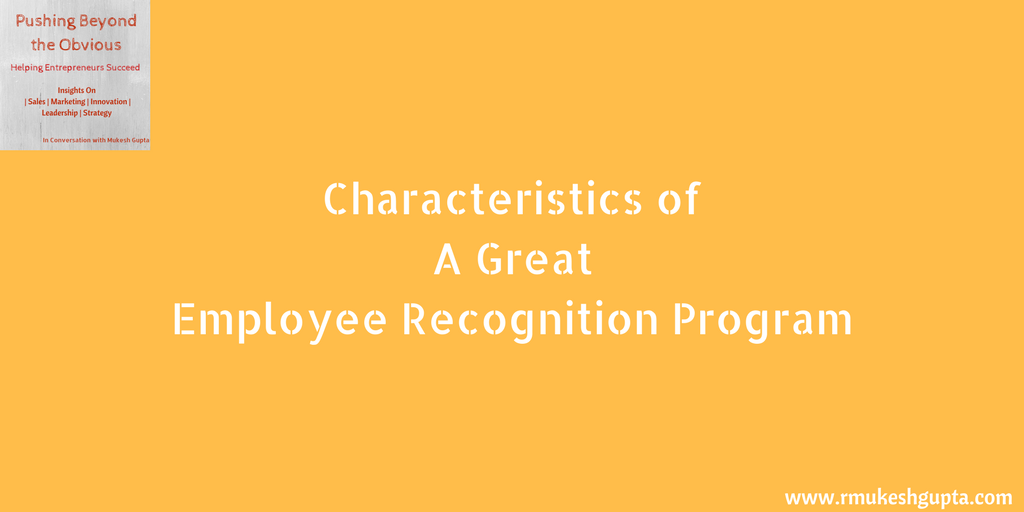Organisational culture is turning out to be the last competitive advantage for businesses. One of the most important aspects of great organisational culture is engaged employees. Many studies have indicated the state of employee engagement and it doesn’t look good.
One of the ways that organisations can increase employee engagement is by ensuring that they are engaged with their employees and recognise & celebrate good work.
It is important to have a program for employee recognition that works. Some key characteristics of such a program are as follows:
Catch them Doing something right:
One of the habits that Sir Ken Blanchard had proposed in his seminal book – The One Minute Manager is the following – Catch them doing something right. Then publicly praise them – tell them what they did right and why it was important and how it helps the business. When done on a regular basis, you build a culture of catching people doing the right things and doing them right.
Public Recognition:
Once you have caught someone doing something right – praise in public. It is important that all recognition should happen in public.
This has two significant impacts:
- It shows everyone else that good behaviour is rewarded.
- It creates social pressure amongst peers to do well and get recognition.
This breeds trust amongst the team and creates a positive spiral of impact and builds good habits amongst the teams.
Peer recognition VS Managerial Recognition:
It is also well known that recognition from peers gives more satisfaction than recognition from the managers. So it is important that we need to implement a peer recognition program and peers are encouraged to catch their colleagues doing something right.
Immediate:
The recognition needs to be a close to the time when the employee has done something right and not wait for a formal feedback cycle. This tells employees that they are not only being watched but that their managers are engaged in their work. Engaged managers to engaged employees.
Gifts are Personalised:
If you plan to add gifts to the recognition, it is important that managers take time to understand the employees whom they want to recognise and understand what is important for them, in their current phase of their lives. Some prefer cash awards, some prefer gifts, others prefer something for their family members. Any gift that is personalised, based on the individual employee tells them that there is a lot of thought and effort that went into deciding the gifts.
Experiences over Things:
It is also very well known that humans quickly get used to any new stuff that they buy or get as a gift but the pleasure they derive from an experience is long lasting. They feel almost similar level of pleasure when they think about their experience as much they did when they actually had the experience. Shared experiences with friends and families are even better.
Every experience also gives them a story that they can share with their friends and family for a long time to come.
So, when you plan to include gifts, try to gift them ability experience new experiences rather than stuff.
Conclusion:
A good employee recognition program is a fundamental need to engage employees and keep them engaged.
A good employee recognition program also gives a good foundation on which the business can build a high performance culture.




